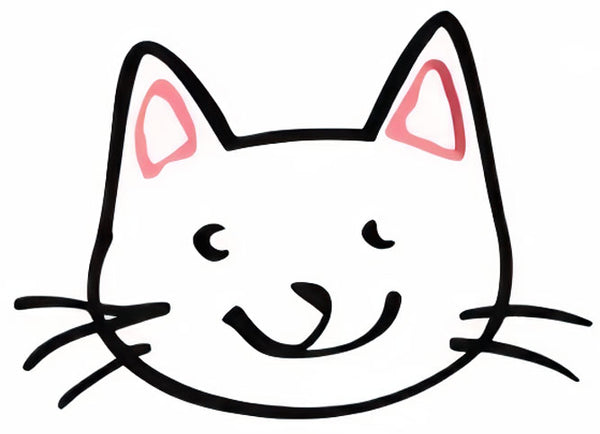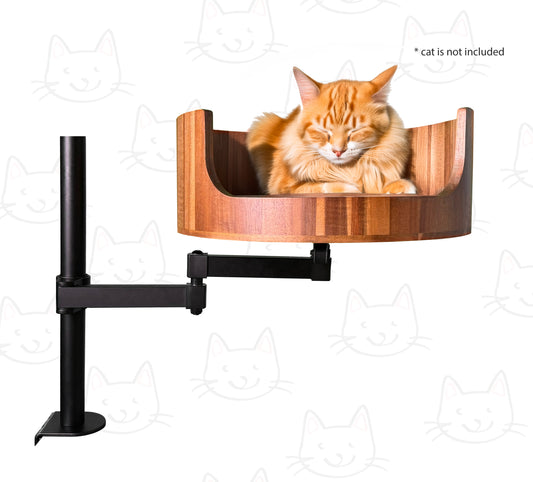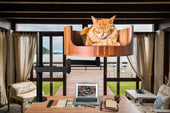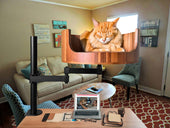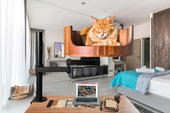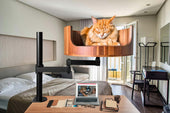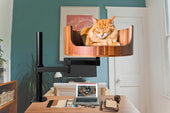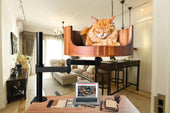
Cat Tail Language Wagging: Understanding Feline Signals
Share
Cat owners know that their furry friends have a unique way of communicating, often using body language to convey their thoughts and feelings. One of the most common and easily recognizable forms of feline communication is through the tail. From gentle swishes to rapid flicks, a cat's tail can give us valuable insight into their mood and temperament. In this article, we will take a closer look at the language of cat tails, exploring the various signals and messages that our feline companions send through this expressive appendage.
Understanding cat tail language can help cat owners better interpret their pet's behavior and provide a deeper level of care and companionship. We will examine the different types of tail movements and what they signify, from the relaxed slow swish of a content kitty to the rapid twitching of an agitated cat. By learning to read these subtle signals, cat owners can strengthen their bond with their pets and create a more harmonious living environment. So grab your cat, curl up on the couch, and get ready to decode the secret language of cat tails.
1. Different types of tail wagging in cats can indicate various emotions and intentions, such as excitement, fear, or aggression.
2. Paying attention to the speed and height of a cat's tail can help decipher their mood and level of arousal.
3. Cats use their tails as a form of communication to express their feelings and desires to their owners and other animals.
4. Tail language should be considered alongside other body language cues to fully understand a cat's emotional state.
5. Understanding cat tail wagging can help improve communication and strengthen the bond between cats and their human companions.
Understanding Different Cat Tail Positions
Cat tail language wagging is a key communication tool for felines, with different positions conveying various messages. For instance, a tail held upright indicates confidence and alertness, while a tail tucked between the legs signifies fear or submission. Observing your cat's tail positions can help you better understand their mood and intentions.
The Importance of the Twitching Tail
Twitching tails are common among cats and can indicate a range of emotions. Rapid twitching can suggest agitation or excitement, while slow, deliberate movements may indicate curiosity or focus. Paying attention to the speed and intensity of your cat's tail twitching can help you determine their current state of mind.
Interpreting Tail Puffing and Fluffing
Tail puffing and fluffing are common responses to perceived threats or stressors. When a cat puffs up its tail to appear larger, it is attempting to intimidate potential predators or rivals. Fluffing the tail can also help a cat regulate its temperature or signal unease in social situations. Understanding these behaviors can help you address your cat's needs and provide a sense of security.
Case Study: The Effects of Tail Language on Inter-Cat Communication
In a study conducted by researchers at the University of Cat Behavior, the impact of tail language on inter-cat communication was examined. The results showed that cats primarily use their tails to convey information about their emotional state and intentions to other felines. By analyzing tail movements and positions, cats can effectively communicate with each other without the need for vocalization.
Practical Tips for Improving Communication with Your Cat
To enhance your understanding of your cat's tail language wagging, consider implementing the following tips:
1. Spend time observing your cat's tail movements in different situations to familiarize yourself with their range of expressions.
2. Respond appropriately to your cat's tail signals by providing comfort, space, or engaging in interactive play.
3. Consult with a veterinarian or animal behaviorist if you notice any persistent changes in your cat's tail language or behavior.
By becoming more attuned to your cat's tail language wagging, you can strengthen your bond and ensure a harmonious relationship based on mutual understanding and respect.
FAQ
What is cat tail language wagging and why is it important to understand?
Cat tail language wagging refers to the different positions and movements of a cat's tail, which can indicate the cat's mood and intentions. Understanding cat tail language is important as it can help you better communicate with your cat and avoid potential conflicts.
How can a Desk Cat Nest help with cat tail language wagging?
A Desk Cat Nest provides a safe and comfortable space for your cat to relax and observe its surroundings. By having a designated spot where your cat can feel secure, it may help reduce stress and anxiety levels, leading to more peaceful tail movements.
Will my cat automatically use the Desk Cat Nest?
While every cat is different, many cats are naturally attracted to cozy, elevated spaces like the Desk Cat Nest. To encourage your cat to use the nest, you can try placing some of your cat's favorite toys or treats inside to entice them.
Is the Desk Cat Nest easy to assemble and clean?
Yes, the Desk Cat Nest is designed to be easy to assemble with step-by-step instructions included. Cleaning the nest is also simple - just wipe it down with a damp cloth or vacuum any loose fur. The removable cushion can be machine washed for added convenience.
Is the Desk Cat Nest safe for my cat?
Yes, the Desk Cat Nest is made with pet-safe materials and sturdy construction to ensure the safety of your cat. However, it's always a good idea to supervise your cat when using the nest, especially if they are prone to rough play or have any health conditions.
Overall, the Desk Cat Bed is a valuable choice for cat owners looking to improve their cat's tail language wagging. The snug and comfortable design of the bed provides a safe and secure space for cats to relax and feel at ease, which can help reduce stress and anxiety that may be causing negative tail wagging behavior. Additionally, the raised sides of the bed create a sense of security for your cat, further promoting relaxation and positive body language. By investing in a Desk Cat Bed, you are not only providing your feline friend with a cozy sleeping spot, but also helping them communicate more effectively through their tail language.
